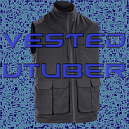RC Review: E-Flite Blade mCP X v2 - First Flight Impressions

I know it's been a long time since I reviewed any RC stuff, so let's begin.
I must confess, I'm a total newbie with RC helicopters (at the time of writing). I'm still learning to fly a true CP heli, which is actually nothing like a FP helicopter like the Blade mSR. A CP heli is set up with blades that can change pitch in-flight based on the throttle setting, potentially allowing the helicopter to be able to fly inverted. FP helis cannot do this, and in addition many FP helis are designed to be able to self-right. This allows beginner pilots to have an easier time learning the controls, but restricts the capabilities of the heli itself. Thus, CP helies are faster and more agile, at the expense of being much harder to fly.
To explain what it's actually like to fly one, well... I can't. There's nothing similar, not even flying a full-sized heli. If you want to see for yourself, I'd at least recommend getting an RC aircraft sim like Realflight G6 or Phoenix RC flight sim.
Now for the review itself.
First Thoughts
I was hesitant at first. I had been warned to steer clear of flybarless designs, as they were supposedly unstable. When I finally got my mCP X in the air, however, I soon learned otherwise. It's more sensitive than similar designs with flybars, but the AS3X electronic stability system takes care of any inherent instability that a flybarless machine has.
Good for beginners, better for experts.
Due to the flybarless design, this heli is quite twitchy. By twitchy, I mean it will react to even the slightest input. Imagine playing a video game with a joystick set to 0 deadzone and full sensitivity - that's how sensitive it is. A light and steady hand is required to fly this thing. This said, as a micro heli the mCP X v2 has the same durability as the more beginner-friendly helis, and if something does break you won't break the bank trying to fix it.
The mileage of a Hummer
The battery life with the stock 200 mAh 1-cell Li-Po battery is barely adequate. Five minutes is expected with basic hovering, while the battery might be capable of three minutes at most when flying aggressive aerobatics (though I have yet to test the latter). The AS3X system is to blame here, as it constantly makes minor changes to the blade angles in-flight, even when you're not giving it any input aside from throttle/pitch.
If you need help setting up the heli, check out the enclosed instruction book
One thing I like about this model is that the instructions tell you how to set up your transmitter's rates, exponential, travel, reversing switches and swashplate settings if you have a Spektrum DX4e, DX5e, DX6i, DX7 or DX8, and the Bind-N-Fly version of this heli (which is prefered over the RTF as the stock transmitter is not designed for a CP heli like the mCP X). I was able to get this thing into the air in as little as 30 minutes, which is the typical amount of time required to charge the battery at a 2C rate.
Crash Test Honor Student
Durability, as I said before, is great. I've crashed a few times (although so far I've only had one major crash) and the only damage was a broken rotor head link and an insignificant crack in one of the main rotor blades. Nothing major, as the heli comes with spare links and blades on this thing are cheap. It was grounded for a few minutes as I put a new link between the swashplate and the blade grip, though.
It's all in the box (mostly)
The Bind-N-Fly comes with a Celectra variable-rate charger, two batteries, a charge adapter, a set of performance blades, a set of high-speed flight blades, four spare links, a spare tail rotor, and two screwdrivers of different sizes. The RTF also includes a usable but inadequate transmitter that also comes with the RTF versions of the mCX, mCX2, mCX MP300, mCX tandem, mSR, mSR X, 120CX and 120SR, as well as 4 AA LR6 alkaline batteries for said transmitter. I do not recommend the RTF. The stock equipment is pretty good to start, but you'll definitely want extra batteries for the heli itself. I also recommend getting extra blades and tail rotors.
If looks could kill...
...then this heli would cause a lot on injuries, but not deaths. The paint scheme is alright but color sense takes a back seat to visibility. Admittedly, I think that's a good idea as this heli is quite quick, but it could use a little contrast between light and dark colors.
Something to note
The tail of this heli is known to kick-out during aggressive aerobatics, but this seems to be an issue entirely with the size of the aircraft.
The Good...
Durable, affordable, stable, agile, visible, fast, and as capable as the larger helis. A great value too.
The Bad...
Tail tends to kick out during aerobatics, twitchy, low battery life, RTF needs a better transmitter.
...and the Ugly
The colors are a bit blinding up-close.
Bottom Line
I'd recommend this to anyone who can handle a CP Heli. It's also one of the better choices for anyone who is ready to step up to a CP from a FP or Coaxial.
Score:
Durability: 10
Agility: 10
Speed: N/A - It's a helicopter, not a jet. Why would you want to go fast?
Aerobatics: 7
Stability: 8
User-friendliness: 10
Value: 8
Final Score:
8.83



1 Comment
Recommended Comments
Please sign in to comment
You will be able to leave a comment after signing in
Sign In Now